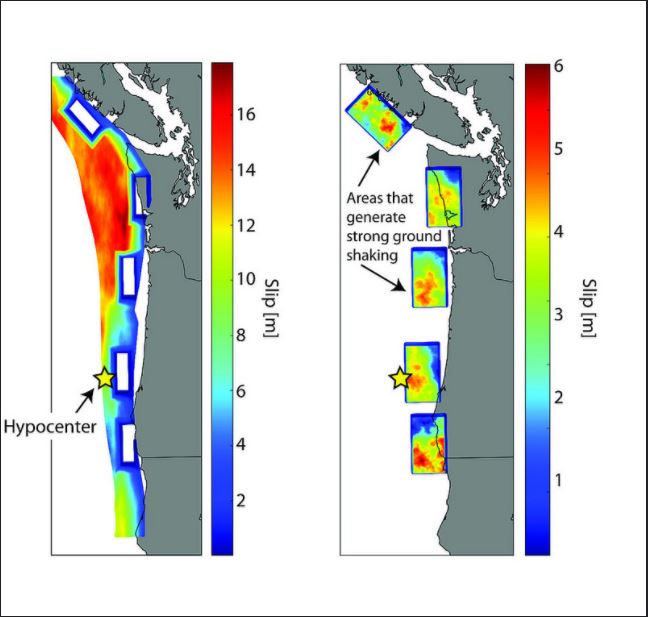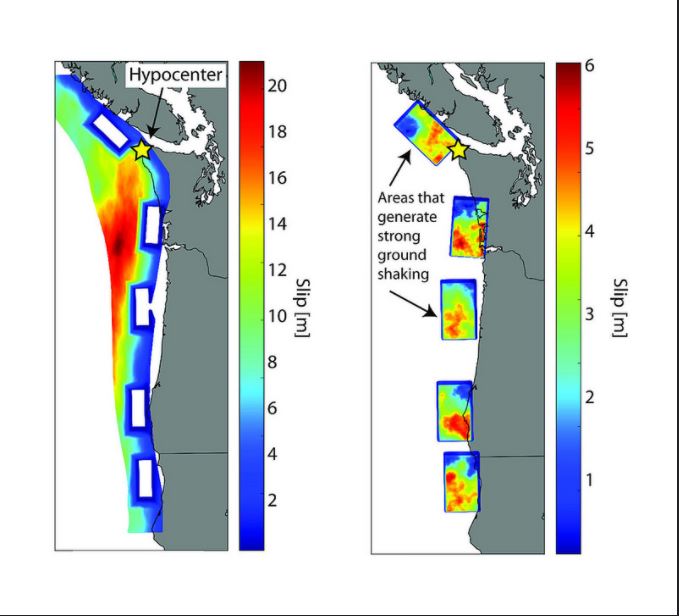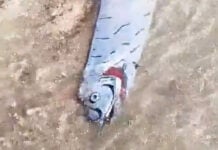One of the worst nightmares for many Pacific Northwest residents is a huge earthquake along the offshore Cascadia Subduction Zone, which would unleash damaging and likely deadly shaking in coastal Washington, Oregon, British Columbia and northern California.
The last time this happened was in 1700, before seismic instruments were around to record the event. So what will happen when it ruptures next is largely unknown.
One University of Washington scientist created 50 simulations to show how strong the shaking will be. Here are two scenarios for Seattle — a “strong shaking” scenario and a “better case” scenario:
There had been just a handful of detailed simulations of a magnitude-9 Cascadia earthquake, and it was hard to know if they were showing the full range. With just a few simulations you didn’t know if you were seeing a best-case, a worst-case or an average scenario. This project has really allowed us to be more confident in saying that we’re seeing the full range of possibilities.
What’s going on?
Off the Oregon and Washington coast, the Juan de Fuca oceanic plate is slowly moving under the North American plate. Geological clues show that it last jolted and unleashed a major earthquake in 1700, and that it does so roughly once every 500 years. It could happen any day.
The simulations
Simulations ran using different combinations for three key factors: the epicenter of the earthquake; how far inland the earthquake will rupture; and which sections of the fault will generate the strongest shaking.
Results show that the intensity of shaking can be less for Seattle if the epicenter is fairly close to beneath the city. From that starting point, seismic waves will radiate away from Seattle, sending the biggest shakes in the direction of travel of the rupture.

Surprisingly, Seattle experiences less severe shaking if the epicenter is located just beneath the tip of northwest Washington. The reason is because the rupture is propagating away from Seattle, so it’s most affecting sites offshore. But when the epicenter is located pretty far offshore, the rupture travels inland and all of that strong ground shaking piles up on its way to Seattle, to make the shaking in Seattle much stronger.
Key factors
The research effort began by establishing which factors most influence the pattern of ground shaking during a Cascadia earthquake. One, of course, is the epicenter, or more specifically the “hypocenter,” which locates the earthquake’s starting point in three-dimensional space.
Another factor they found to be important is how far inland the fault slips. A magnitude-9.0 earthquake would likely give way along the whole north-south extent of the subduction zone, but it’s not well known how far east the shake-producing area would extend, approaching the area beneath major cities such as Seattle and Portland.

The third factor is a new idea relating to a subduction zone’s stickiness. Earthquake researchers have become aware of the importance of “sticky points,” or areas between the plates that can catch and generate more shaking. This is still an area of current research, but comparisons of different seismic stations during the 2010 Chile earthquake and the 2011 Tohoku earthquake show that some parts of the fault released more strong shaking than others.
Results
Overall, the results confirm that coastal areas would be hardest hit, and locations in sediment-filled basins like downtown Seattle would shake more than hard, rocky mountaintops. But within that general framework, the picture can vary a lot; depending on the scenario, the intensity of shaking can vary by a factor of 10. But none of the pictures is rosy.
“We are finding large amplification of ground shaking by the Seattle basin. The average duration of strong shaking in Seattle is about 100 seconds, about four times as long as from the 2001 Nisqually earthquake.”
Follow us: Facebook and Twitter
50 simulations of the ‘Really Big One’ show how a 9.0 Cascadia earthquake could play out












Why all of sudden revealing the Cascadia zone? Convenient to control the narrative when they actually placed nuclear bombs off shore to create the tsunami they want. Whenever it’s (sniff, sniff) convenient??
[…] One of the worst nightmares for many Pacific Northwest residents is a huge earthquake along the offshore Cascadia Subduction Zone, which would unleash damaging and likely deadly shaking in coastal Washington, Oregon, British Columbia and northern California. Read More… […]